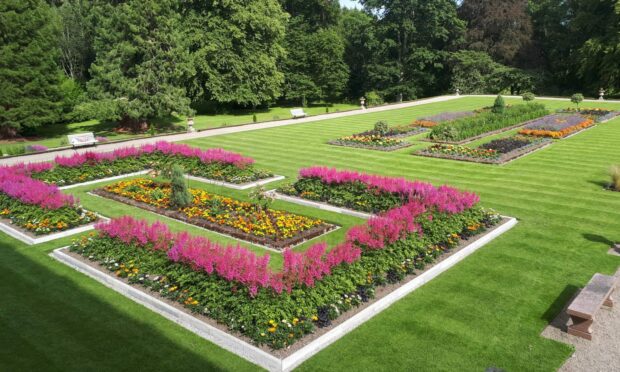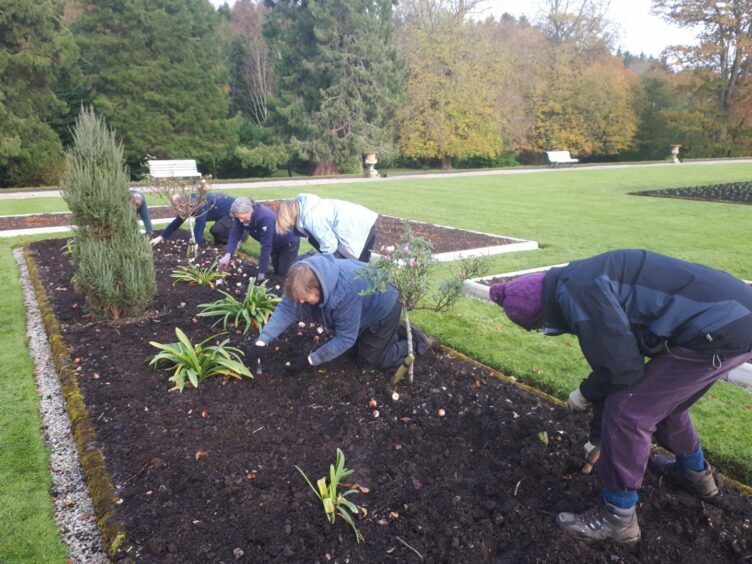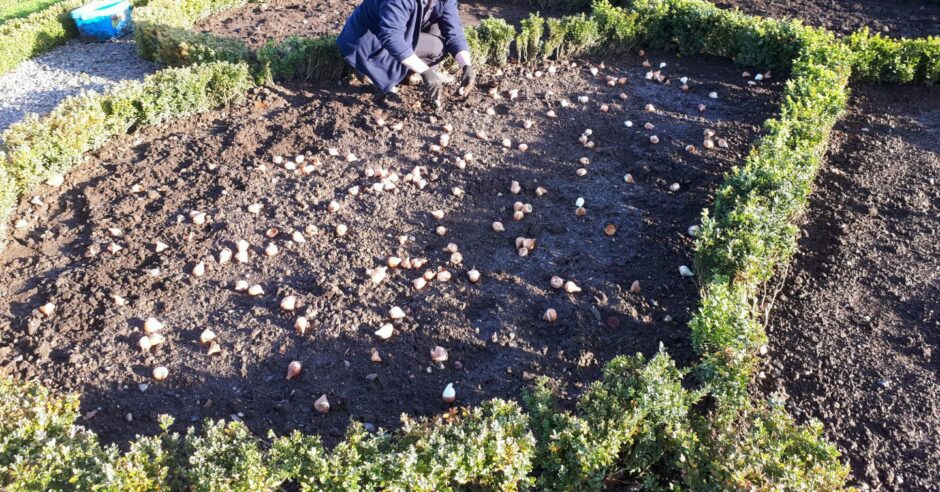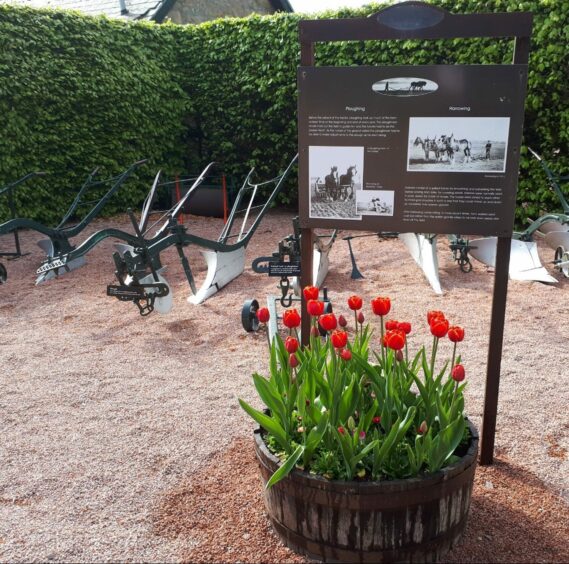We’ve reached that time of year now that we say farewell to the 20,000 annual bedding plants at Pitmedden Garden and the 10,000 annual bedding plants at Haddo House.
The epic summer and early/mid-autumn riot of colours are drawing to an end and so it is with courage that we must say thank you for your service and crack on with the big lift out; resisting the urge to eke out another few weeks of fading colour.
Make space for spring bedding and bulbs
We bite the bullet now so that we may have time to empty the beds, give them a thorough weed and a fork over and a top-up of fresh compost where levels have dipped, then a smooth over and begin planting the spring bedding and bulbs.
Namely primroses and Bellis perennis ‘Bellissima’, better known as pom-pom daisies, for spring 2023 bedding, as well as spring bulbs like Narcissus spp. (daffodils) and tulips.
I used to prefer to plant in early spring, but with the changing seasons, things feel misaligned. The old preference for springtime planting was because even tough primroses have a tendency to struggle under heavy snows and frosts during winter.
You’d get to spring and half of your lovely display could be absent. Nowadays though I have garnered better results planting in October or early November when there is still warmth and moisture in the ground, allowing the bedding to put down some decent root growth prior to growth stopping in winter.
The resumption of growth when spring comes is superior because these days, spring is inevitably drier (something many local farmers I know are often grumbling about for crop establishment) meaning the plants in the ground from late October garner bigger, better roots that more efficiently search for water and nutrients in the soil sphere and thereby need less mollycoddling to grow come spring.
Planting bulbs
Planting bulbs for spring is usually done around November. A key thing here is to ensure that they are planted to the right depth (rule of thumb is around three times the size of the bulb) and it can be helpful to pop a spot of sharp sand at the bottom of the hole. This is just so the bulb can, firstly, establish easy roots, and secondly, improve drainage so as not to have their wee bottoms sat rotting in wet soil.
This is another key part of bulb establishment. If your ground is very heavy clay and drains poorly then it will need some amelioration beforehand to improve drainage or else you’ll spend a lot of money and effort on bulbs that turn to mush in the ground.
Amelioration is simply an affa’ fancy way of saying get some lovely compost, leafmould, loam or well-rotted manure in there and get it dug in.
Give your soil a hand to get up to scratch to become a fine crumbly, moisture-holding yet free-draining medium. That old saying “moist but well-draining” may sound like an oxymoron in every gardening magazine, but it is very achievable with time and effort.
Pot planting
If you are someone that adds a pop of colour to your garden in spring with pots rather than planting in the ground, then planting bedding in early spring is actually best.
Pots, as always in gardening, are a trickier beast. The small amount of soil in pots (or even less so in window boxes) means that moisture control is much harder to maintain.
Great drainage is required in pots because they easily become wet. If poorly drained then it leads to boggy, wet soil causing anaerobic conditions which plant roots suffocate in.
They are slowly poisoned from ethanol buildup, eventually killing the plants. This means that you can plant your bulbs in your pots in November BUT make sure your pots are well drained and won’t spend all winter getting drenched and sitting soaked.
I’ve seen some folk plant theirs up now and then stick them in the polytunnel or glasshouse for winter before sticking them back outside in spring. Just giving them an odd light watering, if feeling quite dry. You can then plant up your pots in early spring with the bedding on top of the bulbs below (before they pop up!) and just give them care and attention, watering as needed.
By doing this they will soon catch up with their counterparts in the ground.
This is the silver lining to the small amount of soil in pots; it warms up much quicker than ground soil and the pot itself helps retain heat hence speedier plant establishment.
Lastly, Have fun with your colour combos. It should be fun after all!
Take care and happy gardening.





Conversation